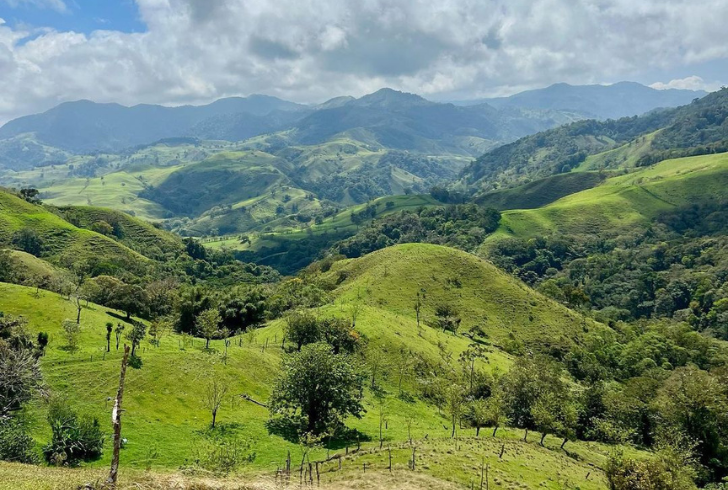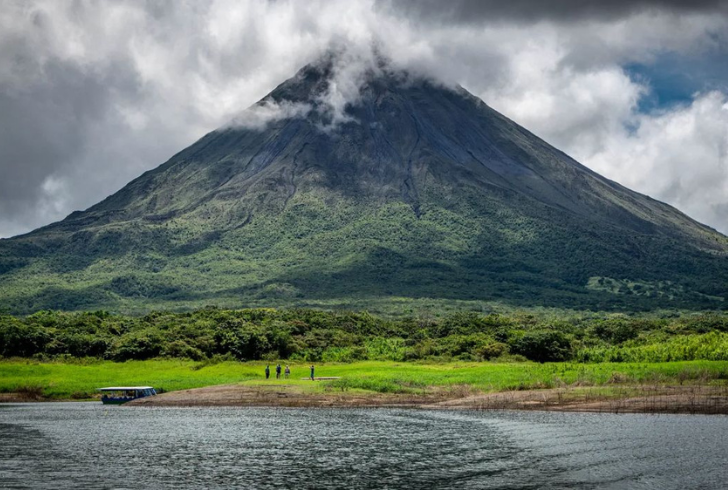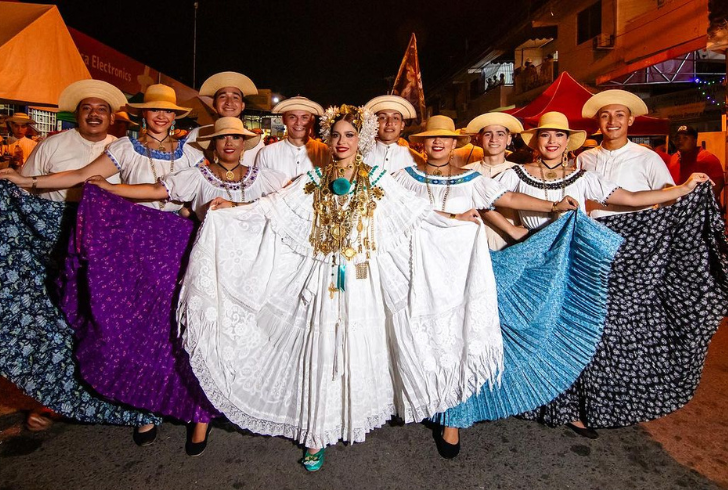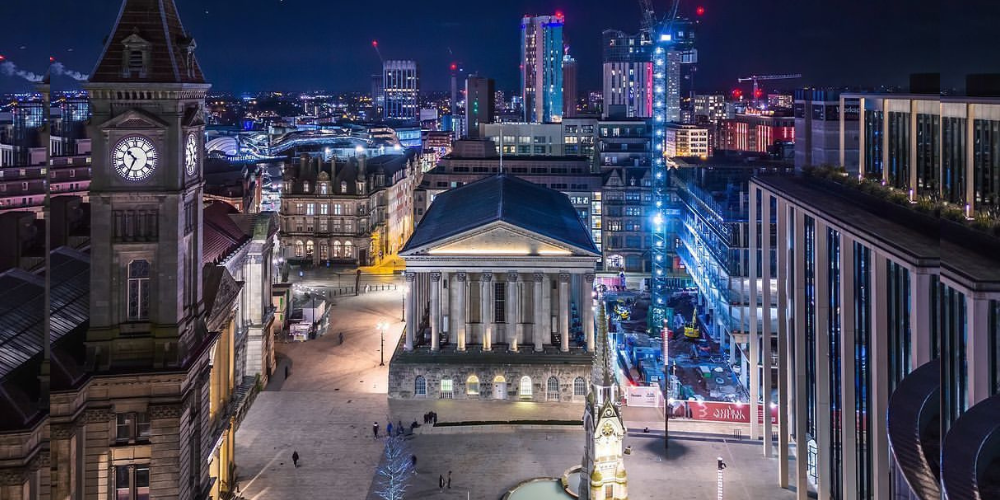Central America beckons with its lush rainforests, volcanic peaks, and sun-kissed coastlines. But for many travelers, the dilemma arises – Panama vs Costa Rica? Both nations boast a treasure trove of experiences, but which one aligns best with your travel desires? Fear not, intrepid explorer! This guide delves into the heart of Panama and Costa Rica, unveiling their unique characteristics to steer you toward your ideal Central American adventure.
Unveiling the Seasons: Sun, Rain, and Everything between

fred_boeck | Instagram | lanning Your Panama vs Costa Rica Adventure Around the Weather.
The dance of rain and sunshine impacts your Panama vs Costa Rica itinerary. Panama experiences a tropical climate with a distinct rainy season (May to December) and a dry season (mid-December to April). Costa Rica, on the other hand, has a more consistent rainy season (May to November) with regional variations.
Here's a sneak peek into what awaits you in each season:
- Rainy Season: Embrace the verdant landscapes and lower prices, but be prepared for afternoon showers that might disrupt travel plans. Panama's Caribbean side, like Bocas del Toro, sees the most rain, while Costa Rica's Pacific Northwest offers some respite.
- Dry Season: Sunshine reigns supreme, making it ideal for outdoor activities. This peak tourist season in both Panama and Costa Rica (December to April) translates to higher prices and larger crowds. Panama's Pacific coast experiences less rain during this time, while Costa Rica's northwest region, Guanacaste, is known for its arid climate.
While Panama boasts warmer temperatures year-round, Costa Rica offers a more varied temperature range due to its higher elevations. Travelers seeking cooler escapes can find solace in Costa Rica's highlands, while those yearning for warm beach weather will find paradise on Panama's coastlines.
Paradise Found: Unveiling the Beaches of Panama vs Costa Rica
Both Panama and Costa Rica are adorned with breathtaking coastlines, but they cater to different beach bums. Panama's claim to fame lies in its crystal-clear waters, teeming with marine life – a snorkeler's and diver's heaven. The Pacific coast beckons surfers with consistent waves, while the Caribbean side offers tranquility on idyllic islands like Bocas del Toro.
Costa Rica's beaches are celebrated for their biodiversity approach. The Pacific coast, with famous spots like Tamarindo and Manuel Antonio, offers a delightful mix of adventure and relaxation. The Caribbean side, less developed, boasts a unique blend of natural beauty and Afro-Caribbean culture.
No matter your preference for lively nightlife or secluded getaways, both Panama and Costa Rica have implemented measures to protect their coastal ecosystems, ensuring a sustainable travel experience.
Panama vs Costa Rica: Beaches at a Glance
- Panama: Crystal-clear waters, excellent for snorkeling and diving, vibrant nightlife (Panama City, Bocas del Toro).
- Costa Rica: Biodiversity hotspots, eco-tourism focused, surf-friendly beaches, laid-back atmosphere.
Unveiling the Majesty of Nature: National Parks of Panama vs Costa Rica
Nature enthusiasts rejoice! Both Panama and Costa Rica boast extensive national parks, serving as sanctuaries for diverse wildlife and offering a plethora of outdoor adventures.
Costa Rica's dedication to conservation is evident in its well-established and visited national parks, like the famed Manuel Antonio and Corcovado. Here, you'll encounter some of the most diverse ecosystems on the planet, perfect for ecotourism enthusiasts.
Panama's national parks, like the UNESCO World Heritage Site Darien National Park, offer a more secluded experience. This massive rainforest reserve bordering Colombia is a haven for wildlife and a cornerstone of Central American conservation efforts.
National Park Highlights
- Costa Rica
- Manuel Antonio National Park: Renowned for its beautiful beaches and adorable capuchin monkeys.
- Corcovado National Park: An immersive jungle experience, home to the elusive jaguar.
- Monteverde Cloud Forest Reserve: Famous for its cloud forests and bird watching, especially the resplendent quetzal.
- Panama
- Darien National Park: A vast rainforest reserve bordering Colombia, boasting exceptional biodiversity.
- Coiba National Park: A marine park and a haven for snorkelers and scuba divers.
- Soberania National Park: Close to Panama City, known for its birding trails and the Panama Canal watershed.
Chasing Fire: Unveiling the Volcanoes of Panama vs Costa Rica

mytanfeet | Instagram | Volcanic Adventures Await: Exploring the Thrills of Panama and Costa Rica.
For those seeking volcanic thrills, both Panama and Costa Rica offer unique experiences. Costa Rica is a land of many accessible volcanoes, with Arenal, Poas, and Irazu being the most prominent. Arenal, in particular, is a hotspot for tourists, offering not only awe-inspiring views but also hot springs and hiking trails.
Panama's volcanic activity is less pronounced, with Baru Volcano being the only active volcano and the highest point in the country. While it doesn't boast the same level of volcanic activity as Costa Rica, the challenging trek to the summit of Baru rewards hikers with breathtaking panoramic views of the Pacific Ocean and the Caribbean Sea on clear days.
Volcano Highlights
Costa Rica
- Arenal Volcano: Hot springs, hiking, and witnessing the fiery glow of lava flows.
- Poas Volcano: Witness the power of nature from the crater rim and marvel at the geysers.
- Irazu Volcano: Hike to the crater lake and be captivated by the panoramic vistas.
Panama
- Baru Volcano: Embark on a challenging hike and be rewarded with the sight of both the Pacific and Caribbean Seas from the summit.
A Culinary Fiesta: Unveiling the Flavors of Panama vs Costa Rica
Food lovers, rejoice! Both Panama and Costa Rica tantalize taste buds with unique flavors reflecting their rich heritages. Panamanian cuisine is a vibrant tapestry of Afro-Caribbean, indigenous, and Spanish influences. Savor hearty stews like sancocho (a chicken stew) and delectable carimañolas (deep-fried yucca fritters stuffed with meat).
Costa Rica's cuisine is known for its emphasis on fresh ingredients. Staples like gallo pinto (rice and beans) and casado (a plate with rice, beans, plantains, salad, and a protein) are sure to satisfy. With its access to both the Caribbean Sea and the Pacific Ocean, Panama offers a wider variety of fresh seafood, waiting to be devoured.
A Taste of Paradise
Panama
- Sancocho: A hearty and flavorful chicken stew.
- Carimañolas: Deep-fried yucca fritters stuffed with meat – a delightful appetizer.
- Ropa vieja: Shredded beef with a tomato-based sauce, a delicious comfort food.
Costa Rica
- Gallo pinto: A quintessential Costa Rican breakfast dish of rice and beans.
- Casado: A hearty and customizable plate with rice, beans, plantains, salad, and a protein of your choice.
- Ceviche: Freshly marinated seafood in a citrusy sauce, perfect for a light and refreshing meal.
No matter your culinary preferences, Panama and Costa Rica offer a delightful adventure for your taste buds.
Unveiling the Cultural Tapestry: Festivals and Indigenous Communities

marialuzsaavedra2024 | Instagram | Discover the rich cultural festivals of Panama and Costa Rica.
Immerse yourself in the vibrant tapestry of Panama and Costa Rica's cultures. Panama's most significant celebration is the colorful Carnival, typically held in February or March. Witness lively parades, pulsating music, and energetic dancing, particularly in the town of Las Tablas.
Costa Rica's 'Fiestas de Palmares' is a two-week festival exploding with rodeos, vibrant concerts, and lively street fairs. Another notable event is the dazzling 'Festival de la Luz' in December, where illuminated floats weave their magic through the streets of San Jose. Both countries celebrate their independence days with great enthusiasm, showcasing their unique cultural expressions.
A Celebration of Culture
- Panama: Carnival, Festival de la Mejorana (folkloric festival), Corpus Christi (religious procession)
- Costa Rica: Fiestas de Palmares, Festival de la Luz, Independence Day Celebrations
Both Panama and Costa Rica are home to indigenous communities with distinct cultures and traditions. Visitors can engage with these communities through immersive experiences, often featuring traditional music, dance, and a chance to admire exquisite artisan crafts.
In Panama, the Guna people of the San Blas Islands are renowned for their molas, vibrant textile artworks. The Ngäbe-Buglé comarca is the largest indigenous region in Panama, offering a glimpse into the lives of the country's most populous indigenous group.
Costa Rica, while having a smaller indigenous population, actively preserves its rich heritage. The Boruca people, known for their colorful masks and the annual "Fiesta de los Diablitos" (Festival of the Little Devils), are a testament to the enduring spirit of Costa Rican indigenous cultures.
A Glimpse into Indigenous Cultures
- Panama: Guna, Ngäbe-Buglé
- Costa Rica: Boruca, Bribri
Engaging with these communities not only enriches your travel experience but also supports the preservation of cultural heritage and empowers indigenous communities.
Summary
Panama and Costa Rica, like two sides of the same coin, offer unique experiences for travelers seeking an unforgettable Central American adventure. Panama beckons with its historic canal, vibrant city life, and secluded beaches. Costa Rica, on the other hand, entices with its lush rainforests, abundant wildlife, and eco-tourism focus.
The ultimate choice depends on your travel desires. Panama caters to those seeking a blend of history, culture, and beach bliss. At the same time, Costa Rica is ideal for nature enthusiasts seeking adventure amidst breathtaking landscapes and a commitment to sustainability.








